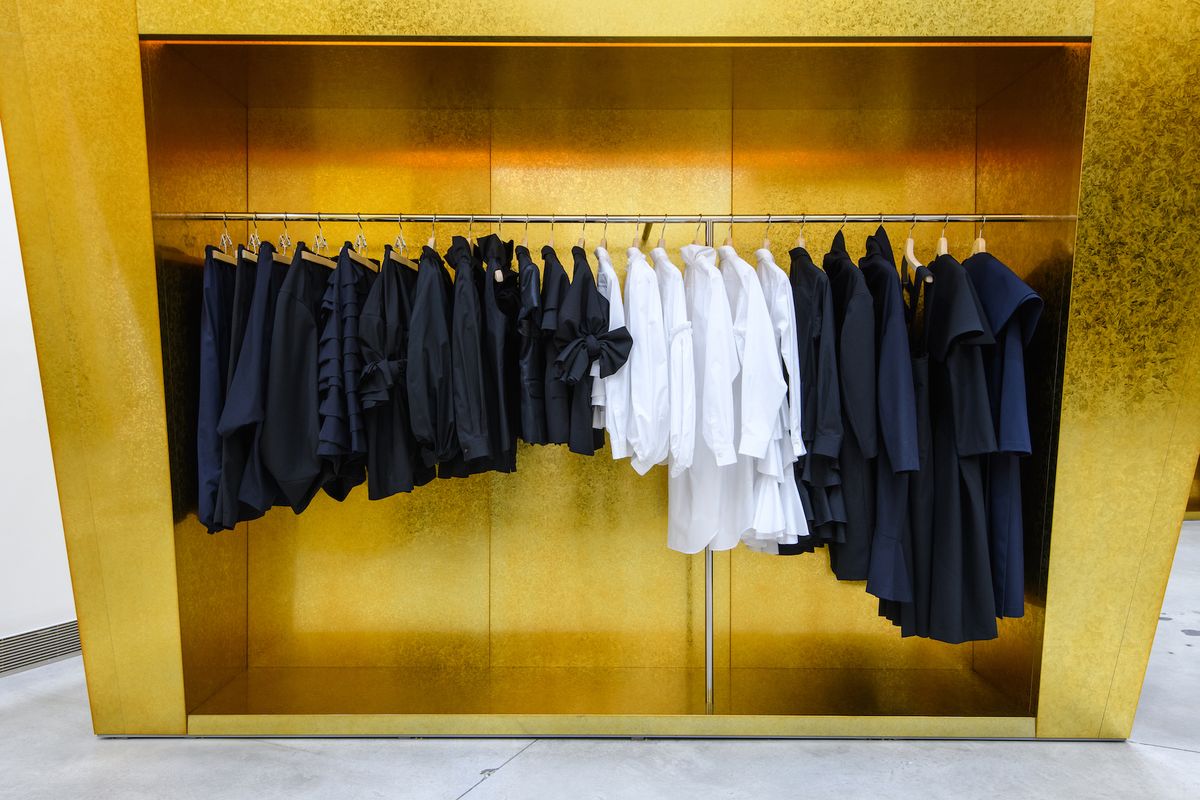The Surge of Online Shopping: Searching For Boutique Fashion at Your Fingertips
The Surge of Online Shopping: Searching For Boutique Fashion at Your Fingertips
Blog Article
Sustainable Fashion: Just How Eco-Friendly Garments Is Shaping the Future of Design
As the apparel industry deals with increasing analysis over its environmental impact, the surge of sustainable style offers an encouraging alternative that aligns design with environmental obligation. Employing cutting-edge products such as plant-based materials and recycled fibers, along with innovative approaches like electronic and 3D printing, developers are redefining what it implies to be trendy in the contemporary age. Simultaneously, the expanding popularity of upcycling and second hand culture is cultivating a change in the direction of a circular economic situation. Yet, exactly how does this motion really affect the future trajectory of fashion, and what obstacles lie ahead in its widespread fostering?
Ingenious Sustainable Materials
As the fashion business comes to grips with its environmental impact, innovative lasting materials have become an important option for reducing eco-friendly impacts. Among one of the most appealing products are those originated from all-natural, renewable sources, such as organic cotton, hemp, and bamboo. These products not just reduce dependency on nonrenewable fuel sources yet additionally lessen unsafe pesticide usage and water usage. Organic cotton, for instance, makes use of considerably much less water than conventional cotton and gets rid of the demand for harmful chemicals, thus preserving soil health and biodiversity.
In addition to plant-based products, developments in biofabrication have resulted in the growth of lab-grown textiles. Mycelium natural leather, stemmed from mushroom origins, presents a eco-friendly and functional alternative to pet leather. Its manufacturing results in substantially reduced carbon emissions and water use, making it a more lasting alternative for designer looking for to line up with environmentally friendly practices.
Recycled products are additionally acquiring traction, with polyester made from recycled plastic containers representing a substantial advancement. This innovation not just diverts plastic waste from land fills and seas however likewise reduces power usage compared to creating virgin polyester. With each other, these materials emphasize the capacity for a much more lasting apparel industry, leading the means for eco mindful style and production.
Eco-Conscious Manufacturing
Building on the technologies in lasting materials, the style industry is also re-evaluating its production procedures to better decrease ecological impact. Key strategies consist of lessening water usage, decreasing carbon exhausts, and eliminating dangerous chemicals.
An additional vital facet is the reduction of toxic chemicals commonly made use of in coloring and completing textiles. Eco-conscious suppliers are changing in the direction of plant-based dyes and waterless dyeing innovations, which not just protect local environments however also enhance worker safety. Innovations like digital printing minimize textile waste and energy usage, supplying a cleaner option to typical methods.
With the innovation of blockchain modern technology, business can now supply in-depth insights right into their supply chains, making certain eco pleasant and moral methods at each action. As the need for eco-conscious items grows, suppliers are forced to innovate, guaranteeing that the future of fashion is both sustainable and stylish.
The Increase of Upcycling
Upcycling, a transformative method in sustainable style, includes creatively repurposing disposed of materials into brand-new, high-grade products. This innovative technique not only reduces waste but likewise reduces the need for basic materials, thereby lessening the ecological influence of clothing manufacturing. By reimagining and reconstructing existing products, developers and style brands are able navigate to these guys to infuse originality right into their collections while advertising environmental duty.

In addition, the upcycling activity has actually equipped little businesses and independent designers, that typically lead in development due to their agility and creative thinking. By profiting from the bountiful accessibility of unused products, these entities add to a circular economic situation, showing that style can be both sustainable and stylish. With upcycling, the sector takes considerable strides towards an extra mindful and responsible future.
Thrift Culture's Influence
The blossoming thrift society substantially reshapes the landscape of lasting fashion, stressing the significance of mindful intake. This cultural change encourages customers to embrace used apparel, therefore minimizing the need for brand-new garment production and lessening environmental effect. Second hand buying not only prolongs the lifecycle of apparel however additionally lowers the carbon footprint connected with manufacturing, moving, and throwing away apparel.
An essential facet of thrift society is its democratization of style. By providing a large array of designs from numerous eras at budget friendly prices, thrift shops make fashion available to a more comprehensive target market. This accessibility fosters a sense of individuality and creative thinking, as customers mix and suit unique items to curate individualized closets without adding to the fast fashion cycle.
Furthermore, thrift culture promotes circularity in fashion, aligning with the principles of a round economic situation. As even more consumers and designers welcome second hand culture, the fashion industry is urged to adjust, incorporating sustainable practices to meet the expanding need for eco-conscious options.

Future Trends in vogue
Fashion's advancement is progressively formed by sustainability-driven efforts and technical developments. As customers end up being more environmentally conscious, the sector is responding with groundbreaking innovations that redefine the future of style. One famous fad is the increase of digital style, where digital garments can be worn in enhanced truth settings, considerably lowering material waste. This change not just deals with the digital-savvy customer but likewise decreases the environmental impact generally related to garment production.
In addition, the integration of blockchain technology uses new possibilities in openness and traceability, enabling consumers to verify the sustainability qualifications of their garments. boutique fashion. This makes sure liability in supply chains and promotes ethical sourcing practices. 3D printing is yet one more advancement that guarantees to change manufacturing processes by enabling on-demand production, thus decreasing excess inventory and waste
Additionally, the development of bio-fabricated materials, such as lab-grown leather and plant-based textiles, offers lasting choices to traditional materials. These innovations reduce dependence on pet items and resource-intensive plants. As these innovations develop, they are poised to transform the style landscape, combining style with sustainability. The future of fashion, for that reason, hinges on a seamless mix of innovation, technology, and environmental obligation.
Verdict
The makeover of the fashion business through lasting methods indicates a crucial shift towards environmental liability. The combination of innovative products, eco-conscious manufacturing strategies, and the embracement of upcycling and thrift culture underscores a dedication to decreasing ecological impacts. As these methods get momentum, they redefine the market's narrative by focusing on lasting and ethical options. This evolution not just aligns style with environmental sustainability but likewise sets a precedent for future fads focused on duty and technology.
As the fashion market official source encounters raising scrutiny over its ecological influence, the rise of sustainable fashion uses a promising option that lines up design with eco-friendly responsibility.As the fashion sector grapples with its ecological impact, innovative sustainable materials have emerged as an important remedy for reducing ecological footprints. With each other, these products underscore the potential for a more sustainable fashion market, paving the method for eco conscious design and production.
Building on the innovations in sustainable products, the style market is likewise re-evaluating its production processes to additionally reduce environmental impact. boutique fashion.Upcycling, a transformative practice in sustainable style, entails artistically repurposing discarded materials into brand-new, high-quality items
Report this page